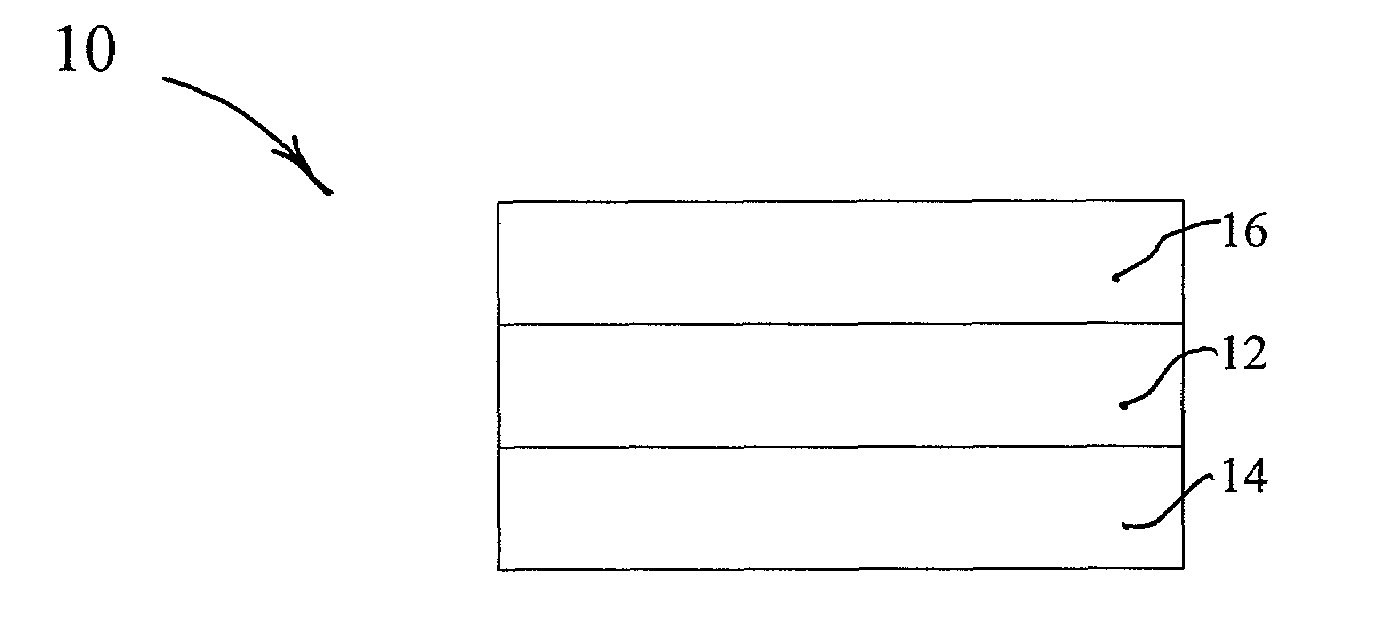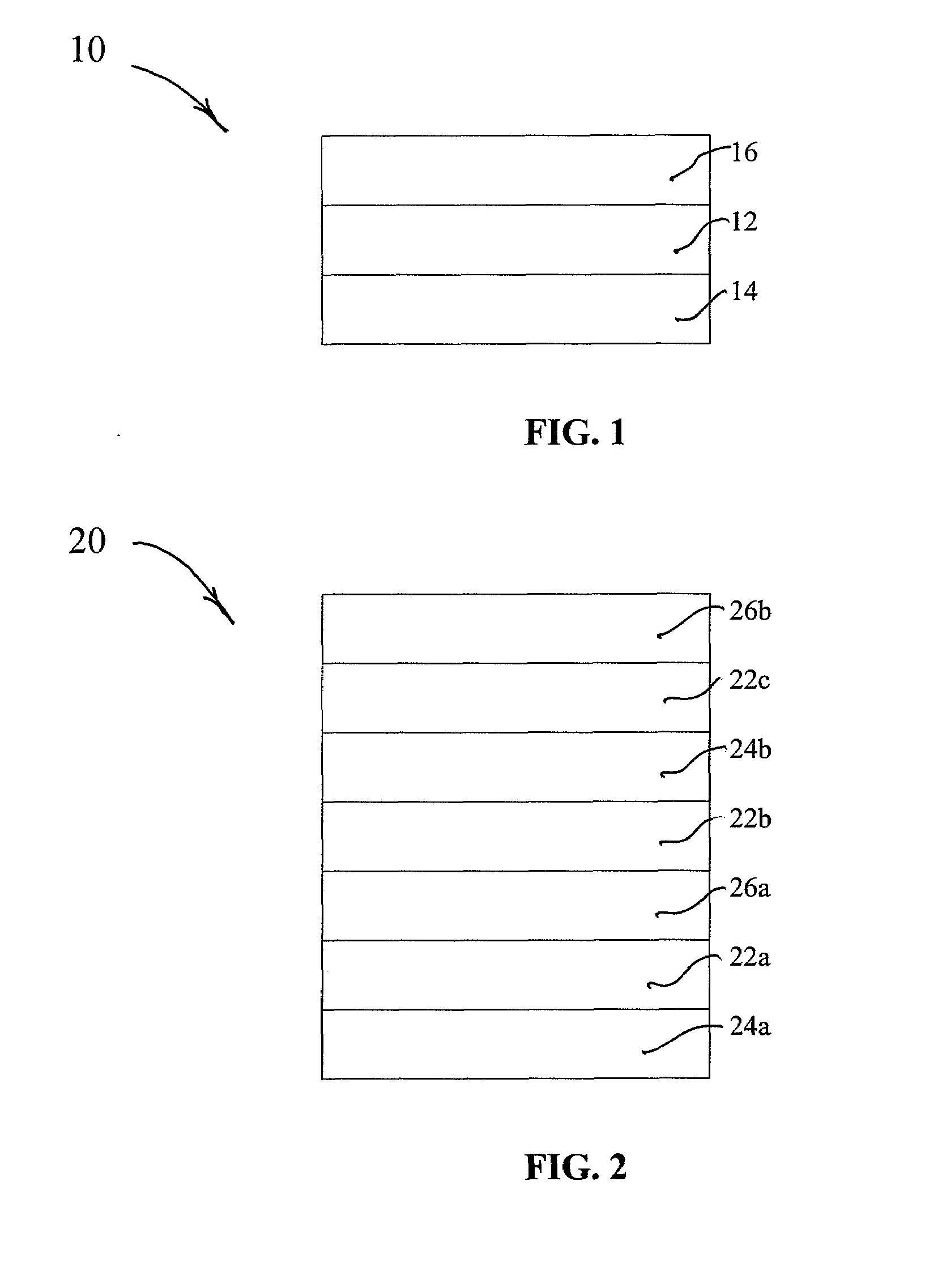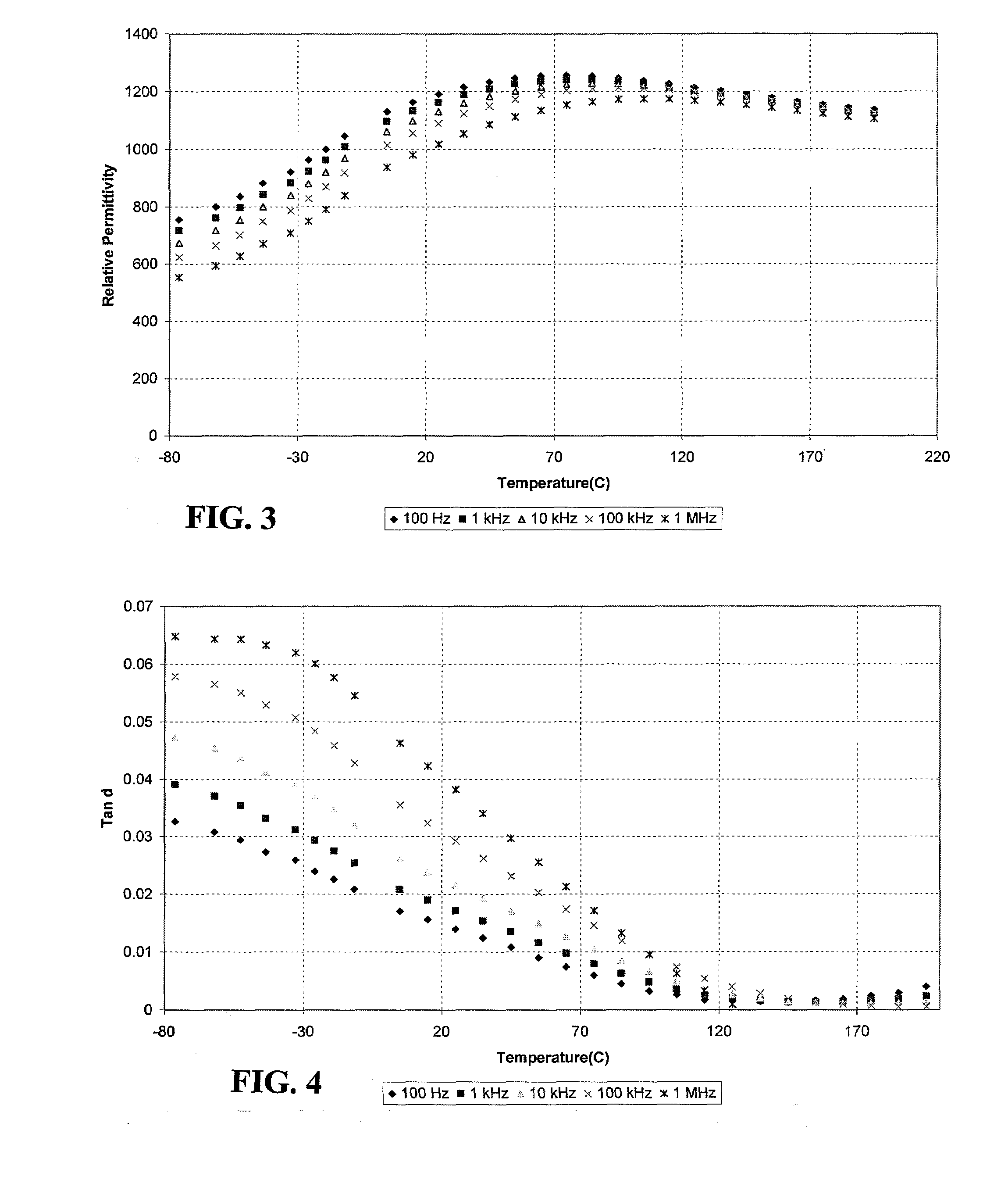High-Temperature Dielectric Materials and Capacitors Made Therefrom
a dielectric material and capacitor technology, applied in the direction of fixed capacitor details, fixed capacitors, fixed capacitor terminals, etc., can solve the problems of capacitor temperature limitations, many power electronic systems are currently limited, and exceed the service temperature of electronic components, etc., to achieve high permittivity, low loss, and high resistivity
- Summary
- Abstract
- Description
- Claims
- Application Information
AI Technical Summary
Benefits of technology
Problems solved by technology
Method used
Image
Examples
example 1
[0042]A dielectric having the composition Na0.2(Na0.5Bi0.5)0.75Ba0.05Ti0.8Ta0.2O3 (0.75NBT-0.05BT-0.2NTa) was prepared from reagent-grade oxide and carbonate powders. The powders were weighed according to their respective stoichiometric proportion and mixed on a ball mill with zirconia media in isopropyl alcohol for a period of 12-24 hours. The dried mixture was calcined at 750° C. for 2 hours. After calcination, binder was added at a level of 1% by weight and mixed for 6-8 hours with zircona media on a ball mill. The powder-binder mixture was dried, ground, and passed through a 100 mesh sieve to ensure uniform distribution of the binder.
[0043]Pellets consisting of 2-3 grams of powder were pressed using a laboratory Carver press and a ⅝″ die. The pellets were fired on zirconia setters with zirconia sand under them to prevent the pellets from adhering to the surface of the setter. They were fired at 1200° C. for 2 hours and the densities were above 90% theoretical. The fired pellets ...
example 2
[0047]Dielectrics having the composition 0.75NBT-5BT-20NTa were prepared with varying amounts of added Mn3O4 using the method described in Example 1. Resistivities were measured on the sintered discs at 200° C. with applied voltages 1-2 kV. The sample thicknesses ranged from 1-2 mm.
[0048]Resistivities are plotted in FIG. 5 as a function of wt % Mn3O4. It is seen that resistivities in excess of 1010 ohm-m can be obtained at 200° C. for a range 0.10-0.16 wt % Mn3O4 (0.07-0.12 wt % Mn).
example 3
[0049]Dielectrics having the composition Na0.3(Na0.5Bi0.5)0.7Ti0.7Nb0.3O3 (70NBT-30NNb) were prepared using the method described in Example 1. Relative permittivity was measured as a function of temperature from −80 to 200° C. It is seen in FIG. 6 that the dielectric has a relative permittivity>500 at room temperature with near zero variation from −80 to 200° C. FIG. 7 illustrates loss (tanδ) properties as a function of temperature.
PUM
| Property | Measurement | Unit |
|---|---|---|
| Temperature | aaaaa | aaaaa |
| Temperature | aaaaa | aaaaa |
| Temperature | aaaaa | aaaaa |
Abstract
Description
Claims
Application Information
 Login to View More
Login to View More - R&D
- Intellectual Property
- Life Sciences
- Materials
- Tech Scout
- Unparalleled Data Quality
- Higher Quality Content
- 60% Fewer Hallucinations
Browse by: Latest US Patents, China's latest patents, Technical Efficacy Thesaurus, Application Domain, Technology Topic, Popular Technical Reports.
© 2025 PatSnap. All rights reserved.Legal|Privacy policy|Modern Slavery Act Transparency Statement|Sitemap|About US| Contact US: help@patsnap.com



